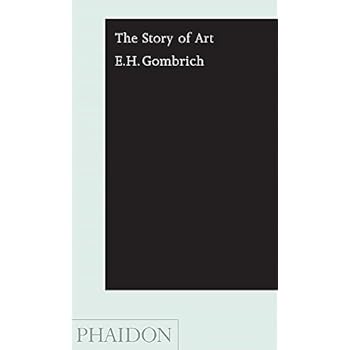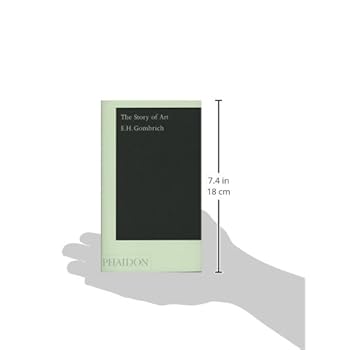The Story of Art, Pocket Edition
Category: Books,Arts & Photography,History & Criticism
The Story of Art, Pocket Edition Details
Review 'Like every art historian of my generation, my way of thinking about pictures has been in large measure shaped by Ernst Gombrich.''The great gift he gave us was to make the living process of art understandable to us all. Rather than a dry cultural history, he made looking at art -- that perceptual experience -- an adventure.''It is hard to overstate my enthusiasm for...one of the pivotal works in the great cause of bringing people and art together...A book to read, re-read, and...to savour lovingly like a classic vintage.''Gombrich has done more than any other human being to draw people towards an enlightened understanding of art... Wearing his immense learning lightly, tackling abstract ideas without losing his readers in jargon, he has attracted a devoted following.''The Story of Art was the first history of art which I read as a 19-year-old student. It was a revelation and I could not put it down. It pushed open the door on some of the greatest achievements of the human spirit. Written with love and scholarship, clarity and insight, it stands as a classic cornerstone in any appreciation of art.''... did more than any other writer in the last 100 years to introduce a wider public to a love of art. Successive generations of students have been drawn to The Story of Art, his erudite survey of Western art, and his Big Idea: "There is no such thing as art -- there are only artists." An academic who stayed firmly outside his profession's charmed circle, his book was intended as a rallying cry against snobbery and elitism, and has remained a classic.''More people...have been introduced to the world of fine art, in the last 45 years, through Ernst Gombrich's The Story of Art than through any other single book.''Ernst Gombrich was the most famous art historian in the world. His reputation was based less on a particular approach to the subject, or the mastery of a single period, than on the breadth of his interests and his skill at making the history of art interesting to a non-specialist public.' Read more About the Author Sir Ernst Gombrich's (1909-2001) standing in the world of art and his popularity with experts and a vast general readership alike remain unrivalled. His books have been translated into more than twenty languages and many titles have become classics. Ernst Gombrich was born in Vienna and came to England in 1936. He spent the larger part of his working life at the University of London's Warburg Institute, where he was Director from 1959 until his retirement in 1976. His 'retirement' saw the publication of numerous books, reviews, and articles, and the conferring of many international honors, including a knighthood and the Order of Merit. In 1994 the city of Frankfurt awarded him the Goethe Prize. Professor Gombrich's books are models of good art-historical writing, and reflect his deep and abiding concern with the standards and values of our cultural heritage. Read more

Related
- Yves Klein at son mythe ..
- Yves Klein: Into The Blue (Can You Tell It's Art?)
- Overcoming the Problems of Art: The Writings of Yves Klein
- Breve historia del arte moderno y contemporáneo
- Architecture in Minutes
- The Short Story of Modern Art: A Pocket Guide to Key Movements, Works, Themes, and Techniques
- Best Grades at GCSE Art and Design
- 2019 Budgeting Planner: Daily Weekly & Monthly Calendar Expense Tracker Organizer For Budget Planner And Financial Planner Workbook (2019 Expense Tracker Budget Planner)
- Hans Baldung gen. Grien und die Glasmalereien im Alten Endinger Rathaus
- Monthly Budget Planner: Weekly Expense Tracker Bill Organizer Notebook Business Money Personal Finance Journal (Expense Tracker Budget Planner)
Reviews
I've read a few "art 101" style histories, and this stands out as by far the best. The problem with most comprehensive histories is that each chapter is usually written by a different author. Consequently, they end up reading like encyclopedias rather than smooth narratives. Volumes like Gardner and Janson are big, impressive, authoritative, and richly illustrated, but reading them cover to cover tends to be a painful and boring labor. Not so with Gombrich, whose "Story of Art" truly reads like a story. Each chapter progresses nicely from the last, making reference to material already covered. The 400+ full page illustrations mean you know exactly what he's describing.It's worth noting that, with the exception of one chapter on Islamic and Chinese art, Gombrich covers western art almost exclusively. While this might be unsatisfying to some, I think sacrificing comprehensiveness is worth maintaining narrative flow.My only complaint is that all the illustrations are lumped together in the back of the pocket edition. This necessitates constant flipping back and forth while reading. I suppose the publisher had to do this to keep the price low and the size small, but it becomes tiresome pretty quickly.





